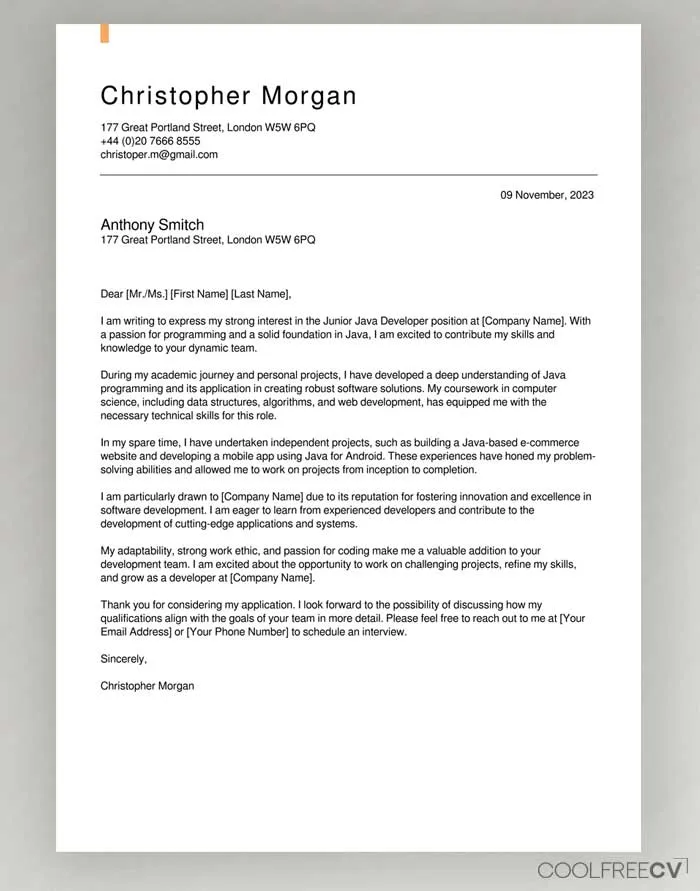Understanding Cover Letter Creator Online
In today’s competitive job market, a cover letter is often the first point of contact between a job seeker and a potential employer. It serves as a crucial tool for introducing yourself, highlighting your qualifications, and demonstrating your interest in a specific role. However, writing a compelling cover letter from scratch can be a challenging and time-consuming endeavor for many. This is where a cover letter creator online comes into play, offering a streamlined and efficient solution for creating professional and impactful cover letters.
Cover letter creators provide a wealth of resources, including customizable templates, helpful guidance, and suggestions to simplify the writing process. By utilizing these tools, job seekers can significantly save time, alleviate the stress associated with crafting a cover letter, and increase their chances of securing an interview. This guide delves into the benefits of using an online cover letter creator and provides five essential tips to help you maximize its effectiveness and create a cover letter that gets noticed.
The Purpose of a Cover Letter
The primary purpose of a cover letter is to serve as your personal introduction to a potential employer. It allows you to expand on the information provided in your resume, highlight your most relevant skills and experiences, and express your enthusiasm for the specific position and company. A cover letter is your opportunity to make a strong first impression, showcase your personality, and explain why you are the ideal candidate for the role.
Unlike your resume, which is a concise summary of your work history, a cover letter provides space to tell a compelling story. It allows you to connect your skills and experiences directly to the job requirements, demonstrating your understanding of the company’s needs and values. A well-written cover letter can significantly increase your chances of securing an interview, setting the stage for the next step in your career journey.
Why Use a Cover Letter Creator
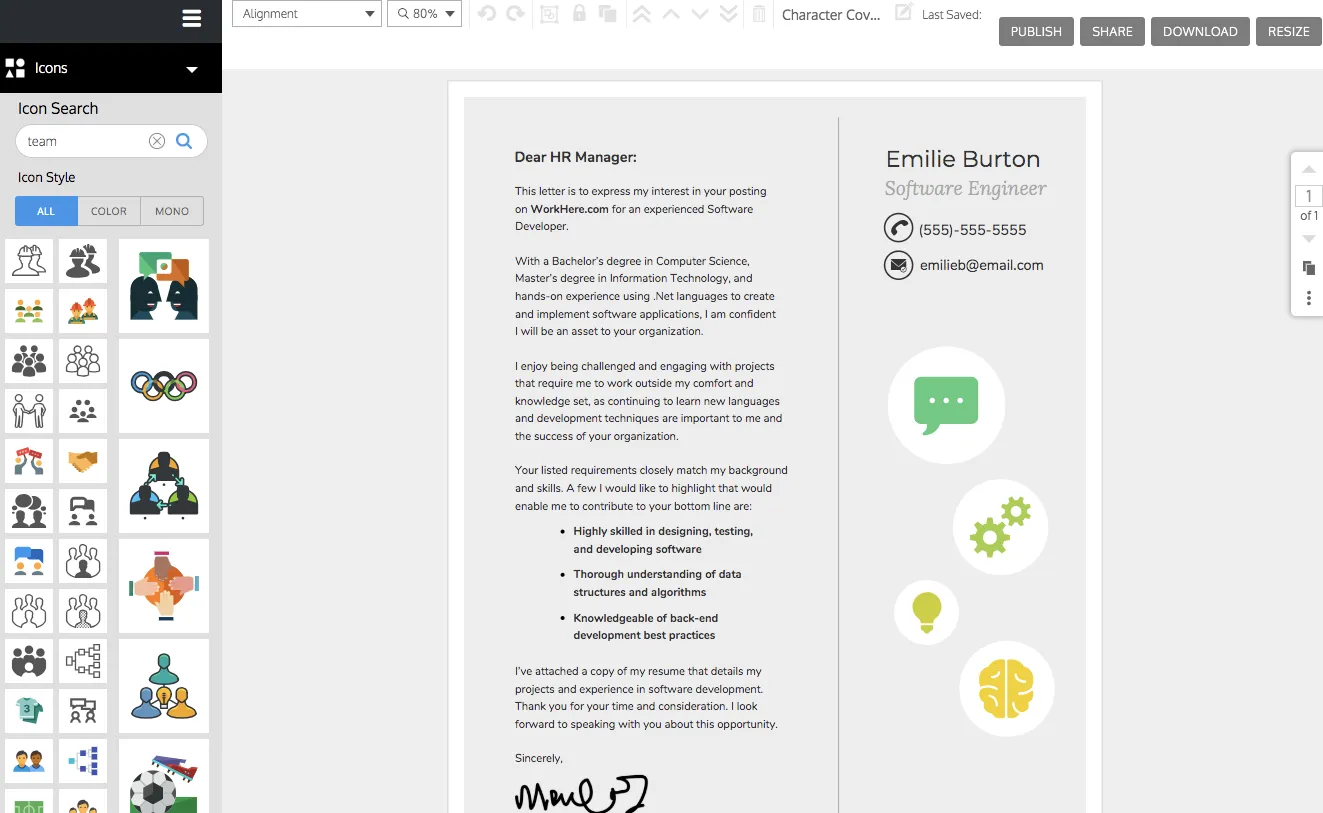
Using a cover letter creator provides numerous advantages, streamlining the job application process and increasing its overall effectiveness. Firstly, these tools simplify the writing process by offering pre-designed templates and customizable sections, saving valuable time. Secondly, many cover letter creators offer suggestions and guidance on what to include in each section, ensuring that your letter is comprehensive and persuasive.
Thirdly, these tools can help you avoid common grammar, spelling, and formatting errors. Lastly, utilizing an online cover letter creator saves time and reduces the stress associated with writing a cover letter from scratch, allowing you to focus on tailoring your application to each specific job opportunity. By leveraging these benefits, job seekers can improve their chances of success in the competitive job market.
Tip 1 Optimize Your Cover Letter Structure
A well-structured cover letter is easy to read and visually appealing, making it more likely that a hiring manager will take the time to review your qualifications. Begin with a clear header containing your contact information, the date, and the employer’s contact details. Address the hiring manager by name whenever possible to personalize your letter and show that you have done your research. In the opening paragraph, clearly state the position you are applying for and how you learned about the opportunity.
In the body of your letter, highlight your relevant skills and experience, providing specific examples to support your claims. Quantify your accomplishments whenever possible to demonstrate your impact in previous roles. The conclusion should express your enthusiasm for the role and reiterate your interest in an interview. A well-structured cover letter shows that you have the ability to present information clearly and concisely.
Formatting Your Cover Letter
Proper formatting is essential for making your cover letter visually appealing and easy to read. Use a professional font such as Times New Roman, Arial, or Calibri, and maintain a consistent font size of 11 or 12 points. Employ single-line spacing and 1-inch margins on all sides. Divide your letter into clear paragraphs to break up large blocks of text. Using bullets to highlight key skills, accomplishments, or responsibilities will draw the reader’s eye.
Ensure the letter is left-aligned or justified for a clean and organized appearance. A well-formatted cover letter substantially improves readability, increasing the likelihood that your key information is easily absorbed. Thoughtful formatting shows your attention to detail, making a positive first impression.
Key Sections to Include
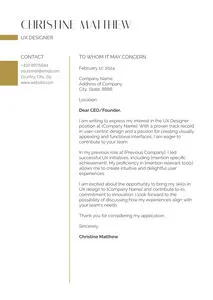
A typical cover letter includes several key sections. Start with a header containing your contact details, the date, and the employer’s contact information. Include a salutation, such as ‘Dear Mr. Smith’ (or the appropriate title). In your introduction, clearly state the position you are applying for and how you found the job posting. The body of your letter should highlight your relevant skills, experience, and accomplishments, supported by specific examples. Your conclusion should reiterate your interest in the role and your desire for an interview.
Always tailor each section based on the job description. Customize your letter to the requirements and values of the specific job and company; personalization is crucial. Avoid sending the same cover letter for every job application. Tailoring your letter demonstrates that you understand the company’s needs and have put in the extra effort to connect your qualifications.
Tip 2: Highlight Relevant Skills and Experience
Your cover letter should highlight the skills and experience that are most relevant to the job you are applying for. Start by reviewing the job description and identifying the key requirements, skills, and qualifications the employer is seeking. Then, provide specific examples of how you have demonstrated those skills and achieved results in your previous roles. Quantify your accomplishments whenever possible by using numbers and data to illustrate your impact.
For example, if you improved sales in a previous role, provide the specific numbers to clearly illustrate your positive impact. By making a strong connection between your skills and the job requirements, you effectively demonstrate your ability to succeed in the position. Tailoring your cover letter shows the employer that you are capable of performing the job.
Tailoring Your Cover Letter
Tailoring your cover letter is crucial for demonstrating your genuine interest in the specific job and company. Research the company and the specific role to understand their values, mission, and requirements. Customize your cover letter to align with those insights. Employ keywords from the job description to show that you understand the role’s demands and possess the necessary skills.
Highlight how your skills and experience align with the company’s goals and the particular challenges of the role. This personalization demonstrates that you’re not just sending a generic application but have taken the time to understand their needs and are genuinely interested in the opportunity. Tailoring your letter will help you stand out from other applicants.
Showcasing Achievements
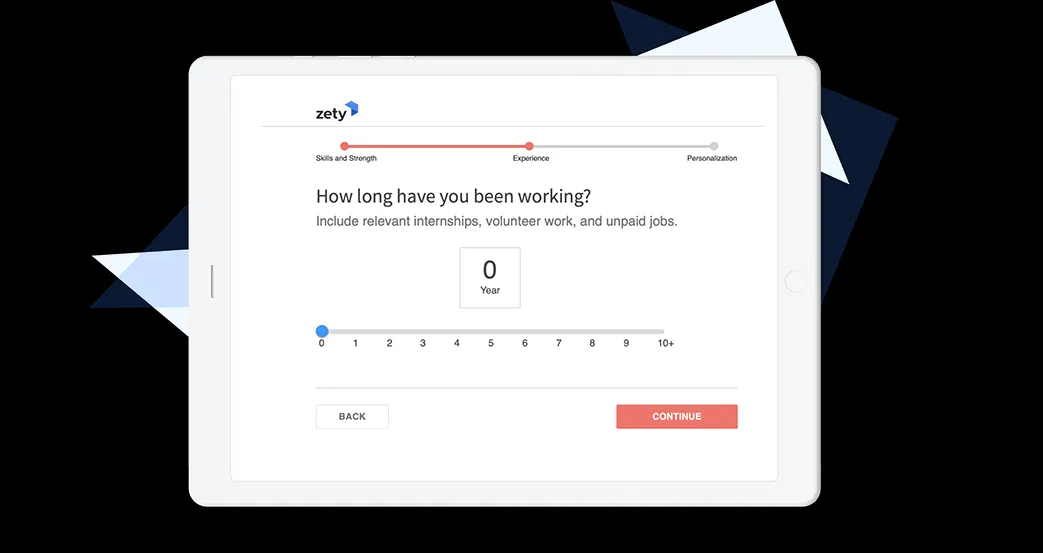
Rather than simply listing your job duties, use your cover letter to showcase your achievements. Focus on the results you’ve achieved in previous roles and quantify them whenever possible. For example, instead of stating that you ‘managed social media,’ say that you ‘increased social media engagement by 30% in six months.’ Employ the STAR method (Situation, Task, Action, Result) to structure your examples, this provides context and results, making your accomplishments clear and compelling.
By highlighting your achievements, you demonstrate your value to a potential employer and make your cover letter more memorable. This gives the reader a clear understanding of your past achievements, showing how your experience will apply to this new position. Showcasing your achievements provides concrete proof of your accomplishments.
Tip 3: Use Strong Action Verbs
Using strong action verbs can significantly increase the impact of your cover letter, helping you to effectively showcase your accomplishments and abilities. Action verbs will make your writing more dynamic and showcase your ability to get results. Instead of using generic verbs like ‘responsible for,’ use action-oriented verbs to describe your actions. Examples include ‘managed,’ ’led,’ ‘developed,’ ‘implemented,’ and ‘achieved.’
Choose verbs that accurately reflect your contributions and achievements in your previous roles, showing how you are ready to perform in this role. By employing strong action verbs, you can create a lasting impression on potential employers. By doing so, you will be able to clearly demonstrate your key achievements and abilities.
Examples of Effective Action Verbs
Some examples of strong action verbs include: ‘Spearheaded,’ ‘Generated,’ ‘Optimized,’ ‘Streamlined,’ ‘Collaborated,’ ‘Negotiated,’ ‘Innovated,’ ‘Launched,’ ‘Increased,’ ‘Decreased,’ ‘Resolved,’ ‘Implemented,’ and ‘Managed.’ These verbs convey that you are proactive, results-oriented, and capable of making a positive impact. Select the verbs that best reflect the activities and results achieved in each role. Be sure to use a variety of action verbs to maintain reader engagement, and avoid overuse of any single verb.
If you want to vary your language further, you can always use a thesaurus to find new words to express your experiences. This will increase the readability of your letter and give a better understanding of your accomplishments. A variety of verbs will improve your cover letter’s overall quality.
How to Integrate Action Verbs
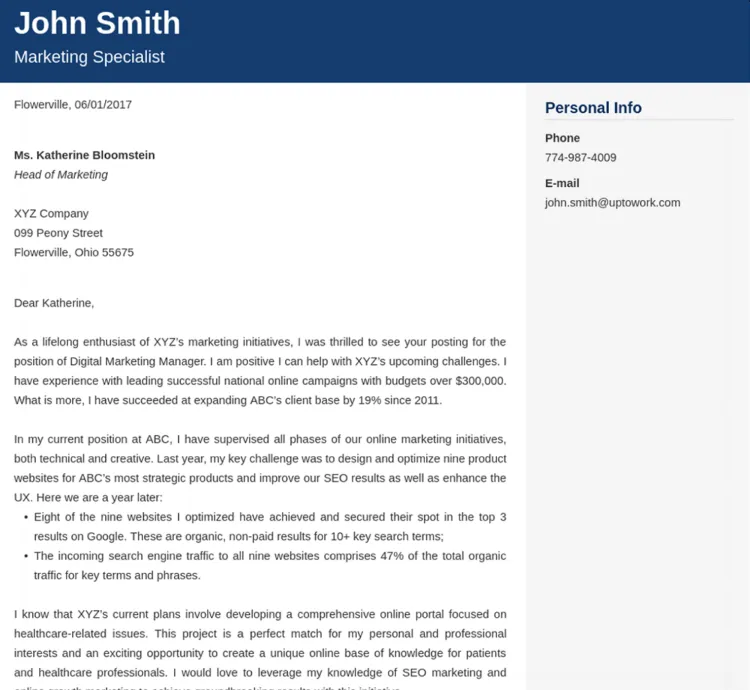
To incorporate action verbs effectively, use them at the start of sentences or bullet points describing your accomplishments. Utilize the STAR method to offer both context and results. Instead of writing, ‘Responsible for managing social media,’ write, ‘Managed and grew the company’s social media presence, resulting in a 25% increase in follower engagement.’
When using action verbs, you can properly express the roles, responsibilities, and achievements in your letter. Always review your cover letter to ensure that you’ve chosen the most impactful action verbs. Using strong verbs in your letter will increase its overall quality.
Tip 4: Proofread and Edit Meticulously
Proofreading and editing your cover letter are crucial for presenting yourself in the best light possible. Grammatical errors, spelling mistakes, and punctuation errors can undermine your credibility and create a negative impression on potential employers. Review your cover letter multiple times to catch and correct any errors. Pay close attention to your word choice, sentence structure, and overall clarity.
Read the letter aloud to identify any awkward phrasing or unclear sentences. Consider asking a friend or family member to review your cover letter and provide feedback. A fresh pair of eyes can often catch mistakes you might miss yourself. Always double-check the hiring manager’s and company’s names for spelling accuracy.
Common Grammar and Spelling Errors
Common grammar and spelling mistakes include incorrect use of commas, misplaced apostrophes, subject-verb disagreements, and misspelled words. Always double-check the hiring manager’s name and company name. Pay special attention to homophones, words that sound alike but have different meanings, such as ’there,’ ’their,’ and ’they’re.’ Ensure your sentences are clear, concise, and grammatically correct. Avoid using slang, jargon, or overly complex language.
Carefully review every detail and utilize the spell-check and grammar-check features. Do not depend solely on these tools; always review your cover letter yourself, as these tools may not catch every error. A combination of automated tools and manual proofreading offers the best results. This will ensure you create the best cover letter possible.
Tools for Proofreading
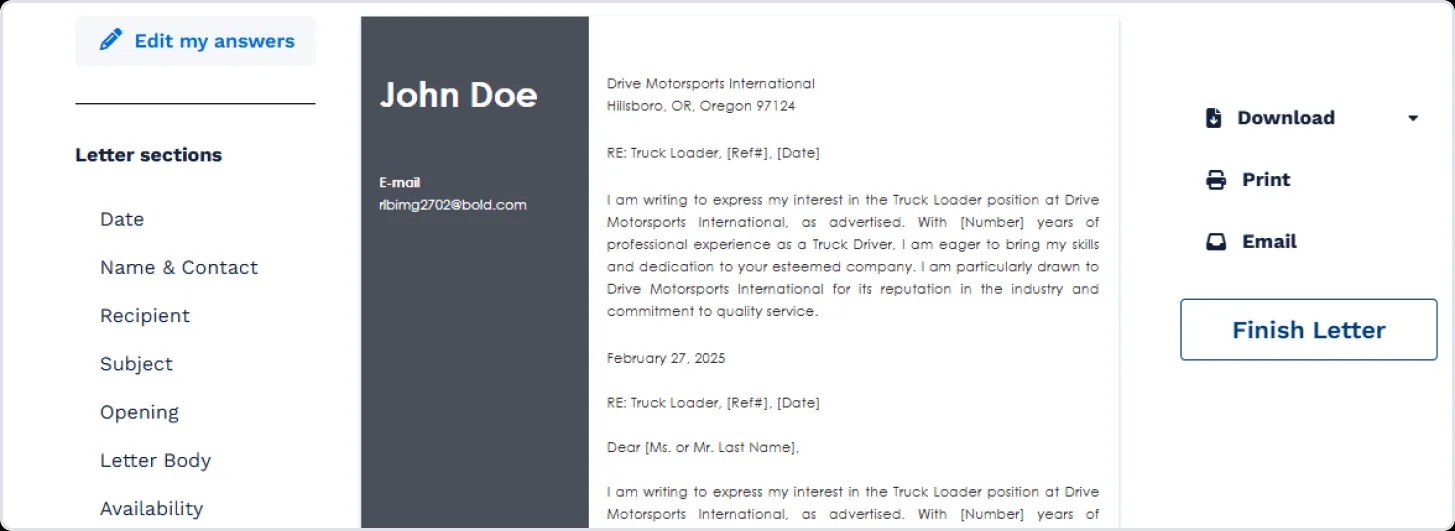
You can use various tools to aid you in proofreading and editing your cover letter. Use the spell-check and grammar-check features in your word processing software. Consider using online grammar checkers, such as Grammarly or ProWritingAid, to identify any errors you may have missed. These tools can help you detect and correct issues in grammar, spelling, punctuation, and style.
Always remember not to rely completely on these tools. Always review your cover letter yourself. A combination of automated and manual proofreading is the best way to ensure your cover letter is error-free. This shows that you take pride in your work, and your dedication to quality will make a strong impression.
Tip 5: Choose the Right Tone and Style
Your cover letter’s tone and style should be appropriate for the specific job and industry you’re applying for. Generally, aim for a professional and confident tone. Use positive and enthusiastic language to convey your interest in the position and the company. Avoid being overly casual, informal, or overly familiar; this is crucial for showing employers you are serious.
Strive to maintain a balance between professionalism and letting your personality shine. Tailor your cover letter to fit the specific requirements and norms of the industry you are applying in. You can increase your chances of getting the job by using the right tone, showing that you are ready for this opportunity.
Adapting to Different Industries
Different industries may have different expectations regarding the tone and style of cover letters. Research the industry and the company to understand their culture and values. A cover letter for a creative role in a marketing agency might allow for a more informal tone, whereas a legal or financial position might call for a more formal approach. Always tailor your language and style accordingly.
Taking the time to research your industry and the company will help you understand expectations. Adapting your style and language will prove you understand the audience, and what they value. By doing so, you can clearly demonstrate your abilities and increase your chances of getting the job.
Maintaining Professionalism
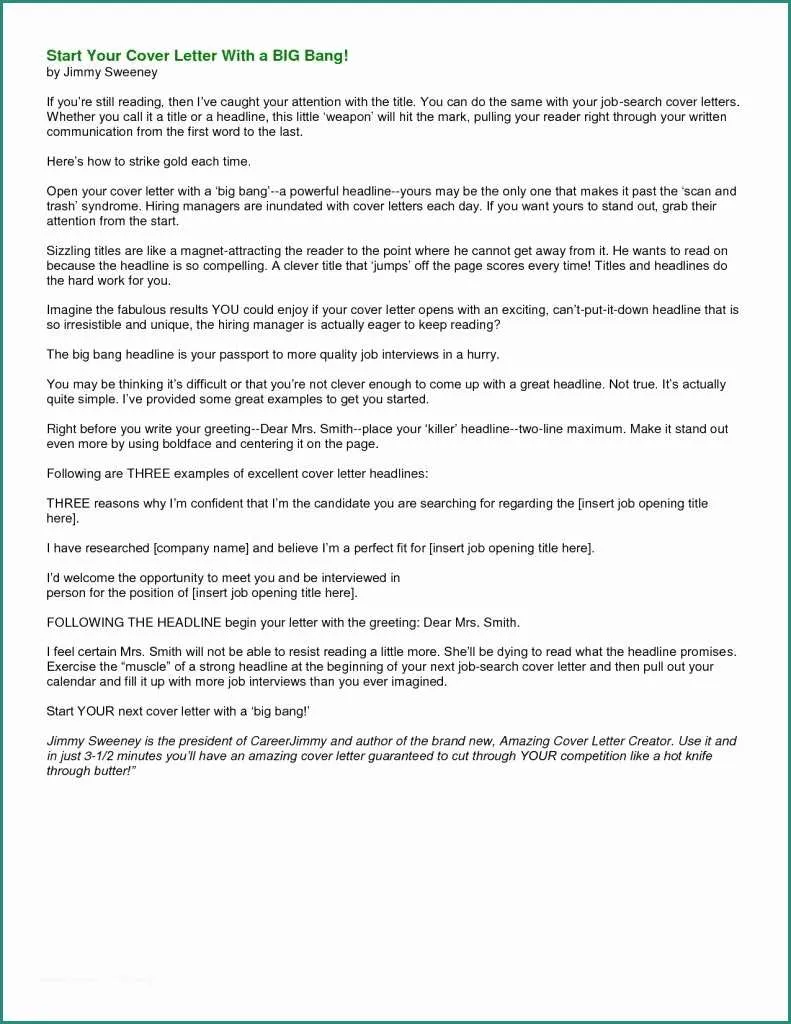
Even when adapting to different industries, maintaining professionalism is crucial. Avoid using slang, jargon, or overly informal language. Focus on clearly communicating your skills, experience, and enthusiasm. Always proofread your cover letter carefully to eliminate errors. Use a professional font and format to create a polished appearance and address the hiring manager by name whenever possible.
By maintaining professionalism, you will show your commitment to quality and attention to detail, both highly valued traits in any industry. Always remember, a well-written and professional cover letter makes a lasting impression. A well-crafted cover letter, done right, will significantly increase your chances of success.
